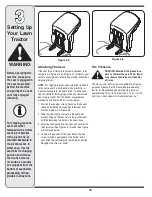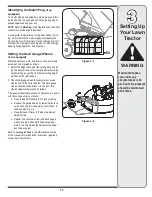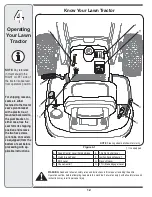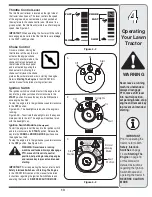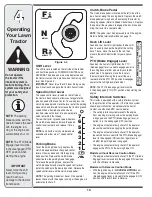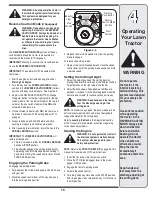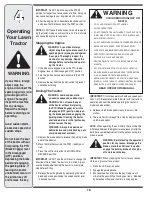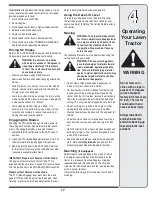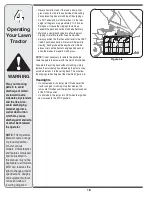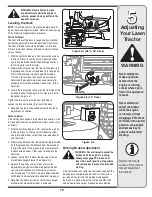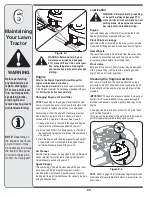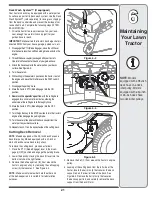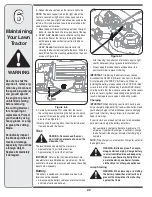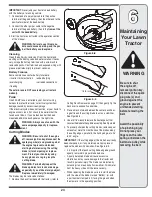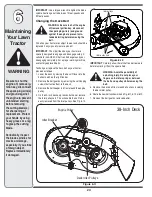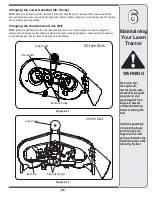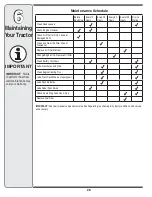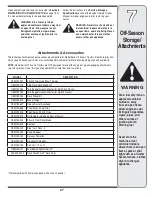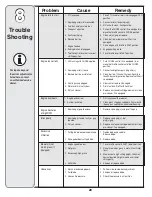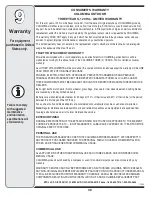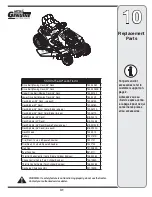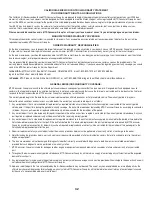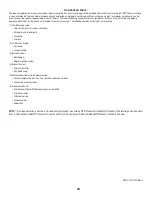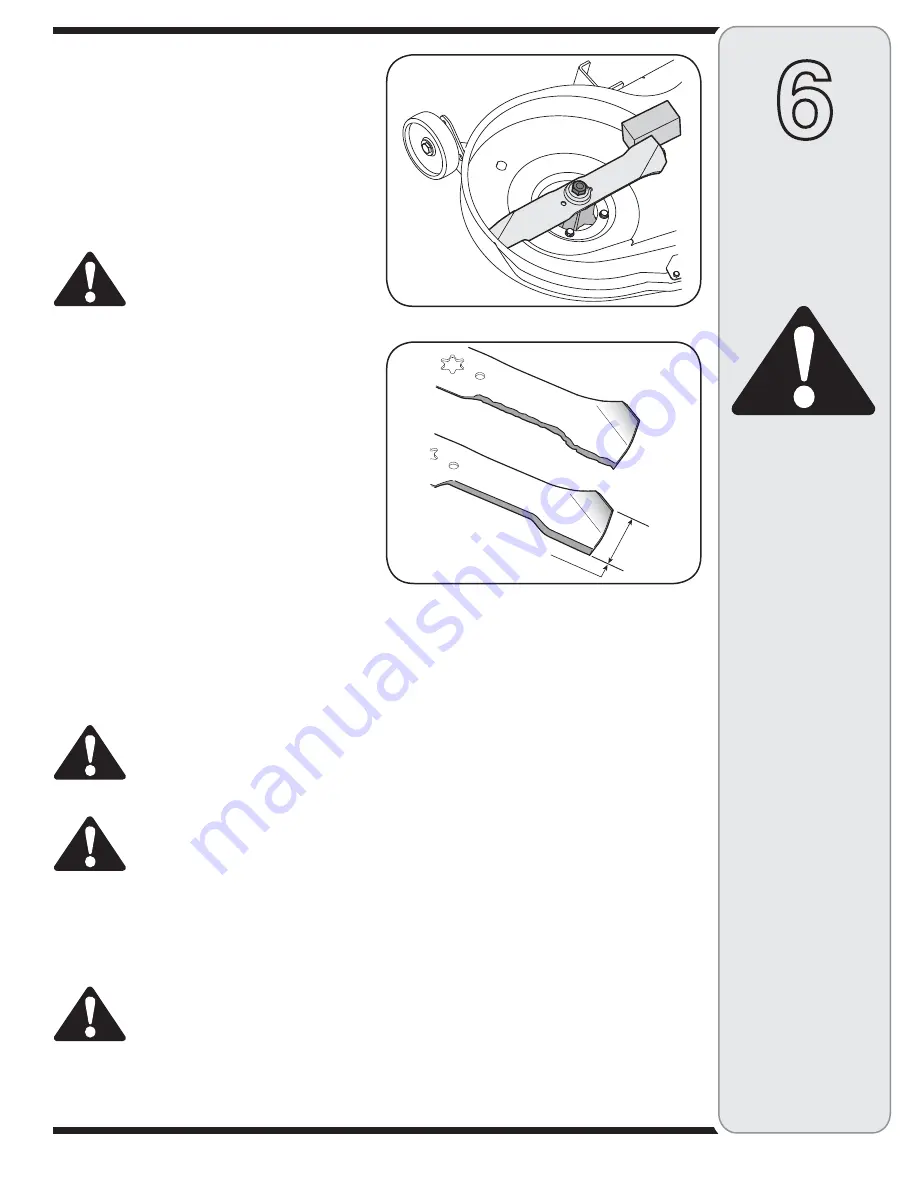
23
Figure 6-8
INCH
Figure 6-9
IMPORTANT: Never jump your tractor’s dead battery
with the battery of a running vehicle.
1. Connect end of one jumper cable to the positive
terminal of the good battery, then the other end to the
positive terminal of the dead battery.
2. Connect the other jumper cable to the negative
terminal of the good battery, then to the
frame of the
unit with the dead battery.
3. Start the tractor as instructed in the operation section
of this manual.
WARNING: Failure to use this proce-
dure could cause sparking, and the gas
in either battery could explode.
Cleaning
Clean the battery by removing it from the tractor and
washing with a baking soda and water solution. If neces-
sary, scrape the battery terminals with a wire brush to
remove deposits. Coat terminals and exposed wiring with
grease or petroleum jelly to prevent corrosion.
Battery Failures
Some common causes for battery failure are:
• incorrect initial activation • undercharging
• overcharging
• corroded connections
• freezing
These failures are NOT covered by your tractor’s
warranty.
Fuse
One 20 AMP fuse is installed in your tractor’s wiring
harness to protect the tractor’s electrical system from
damage caused by excessive amperage.
If the electrical system does not function, or your tractor’s
engine will not crank, first check to be certain that the
fuse has not blown. It can be found under the hood
mounted behind the dash panel on the right side.
WARNING: Always use a fuse with the
same amperage capacity for replace-
ment.
Cutting Blades
WARNING: Be sure to shut the engine
off, remove ignition key, disconnect the
spark plug wire(s) and ground against
the engine to prevent unintended
starting before removing the cutting
blade(s) for sharpening or replace-
ment. Protect your hands by using
heavy gloves or a rag to grasp the
cutting blade.
WARNING: Periodically inspect the
blade spindles for cracks or damage,
especially if you strike a foreign object.
Replace immediately if damaged.
The blades may be removed as follows.
1. Remove the deck from beneath the tractor, (refer to
6
Maintaining
Your Lawn
Tractor
WARNING
Be sure to shut
the engine off,
remove ignition key,
disconnect the spark
plug wire(s) and
ground against the
engine to prevent
unintended starting
before removing the
belt.
Avoid the possibility
of a pinching injury.
Do not place your
fingers on the idler
spring or between the
belt and a pulley while
removing the belt.
Cutting Deck Removal on page 21) then gently flip the
deck over to expose its underside.
2. Place a block of wood between the center deck hous-
ing baffle and the cutting blade to act as a stabilizer.
See Figure 6-8.
3. Use a 15/16” wrench to remove the hex flange nut that
secures the blade to the spindle assembly. See Figure 6-8.
4. To properly sharpen the cutting blades, remove equal
amounts of metal from both ends of the blades along
the cutting edges, parallel to the trailing edge, at a 25°
to 30° angle.
IMPORTANT: If the cutting edge of the blade has already
been sharpened, or if any metal separation is present,
replace the blades with new ones. See Figure 6-9.
• It is important that each cutting blade edge be ground
equally to maintain proper blade balance.
• A poorly balanced blade will cause excessive
vibration and may cause damage to the tractor and
result in personal injury. The blade can be tested by
balancing it on a round shaft screwdriver. Grind metal
from the heavy side until it balances evenly.
• When replacing the blade, be sure to install the blade
with the side of the blade marked ‘‘Bottom’’ (or with
a part number stamped in it) facing the ground when
the mower is in the operating position.


